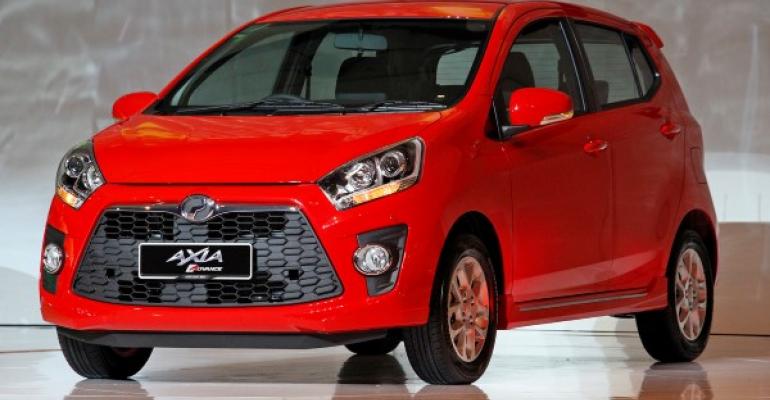Malaysia’s National Automotive Policy is succeeding in its objective of ensuring the sustainability of the domestic automotive industry, a senior industry official says.
Malaysia Automotive Institute CEO Madani Sahari tells local media he is confident the objectives of the NAP will be achieved by its target date of 2020.
The NAP promotes Malaysia as a regional automotive hub for energy-efficient vehicles and Madani says one of its main objectives is to attract domestic and foreign investments into the EEV sector.
“A total of 8.9 billion ringgit ($2.5 billion) has been invested in the Malaysian automotive industry over the first nine months of the year,” Madani tells the New Sunday Times CBT.com website.
This includes MYR2 billion ($572 million) by Perodua to make its new EEV, the Axia, and Mazda’s plans to expand its assembly plant to produce EEVs for Malaysian and export markets.
“Swedish car manufacturer Volvo, having recently shuttered its Thai factory, is now focusing on Malaysia to maximize NAP 2014 incentives by expanding its manufacturing plant in Shah Alam for domestic and ASEAN (Association of Southeast Asian Nations) markets,” he says.
China-based Great Wall, working with Malaysia’s GO Automobile, is spending RMB1 billion ($286 million) to produce EEVs in their production plant. The first phase of the project will see production at a rate of 25,000 units a year, rising to 50,000 by the end of 2015 and 100,000 in 2018.
Honda is spending RMB1 billion to expand its Malaysian plant to include hybrid-car production, increasing its annual capacity to 100,000 units.
The NAP aims to promote the creation of a competitive automotive industry in terms of employment, technology development and supply-chain improvement.
In the first nine months of the year, Madani says, employment in the sector rose 7,500 to top 500,000.
International Trade and Industry Minister Mustapa Mohamed says his ministry will detail the progress of the NAP 2014 in January, including details of companies planning to set up EEV facilities.
“Whatever we do, (the local industry) must be competitive and this will depend on quality and price,” the government’s Bernama news agency quotes him as telling the Malaysian Parliament. “If the quality of the vehicle is good and the price is reasonable we can sell the car. We cannot force the consumers to buy local cars. We have to convince them of the quality of the car.”
Mustapa says Malaysia still imports more cars than it exports.
“I am not very happy because exports of Malaysian products, especially in automotive sector, were still low,” he says. “Last year, we exported only about RMB900 million ($257.4 million) compared with imports of RMB12 billion ($3.4 billion).”
Similarly, the auto-components sector accounts for RMB4 billion ($1.1 billion) in exports and imports of RMB8 billion ($2.2 billion), Bernama quotes Mustapa as saying.
Elsewhere, Bernama says about RMB3 million ($858,000) will be spent in 2015 to open 300 more electric-vehicle charging stations nationwide in a bid to boost demand for EVs in Malaysia.
The stations will be located in major cities where high EV penetration is expected in coming years.
The country now has 40 EV charging stations, 10 of them in government offices.
Funding will come from the government-managed Malaysian Electricity Supply Industries Trust Account and the stations will be installed by a local company, First Energy Networks.
Bernama says the charging stations are crucial for Cohesive Mobility Solution (Comos), an EV car-sharing program launching next year. Comos, an alliance between Malaysian Automotive Institute, CMS Consortium and Greentech Malaysia, aims to increase the EV car fleet to 3,500 units nationwide by 2020.





